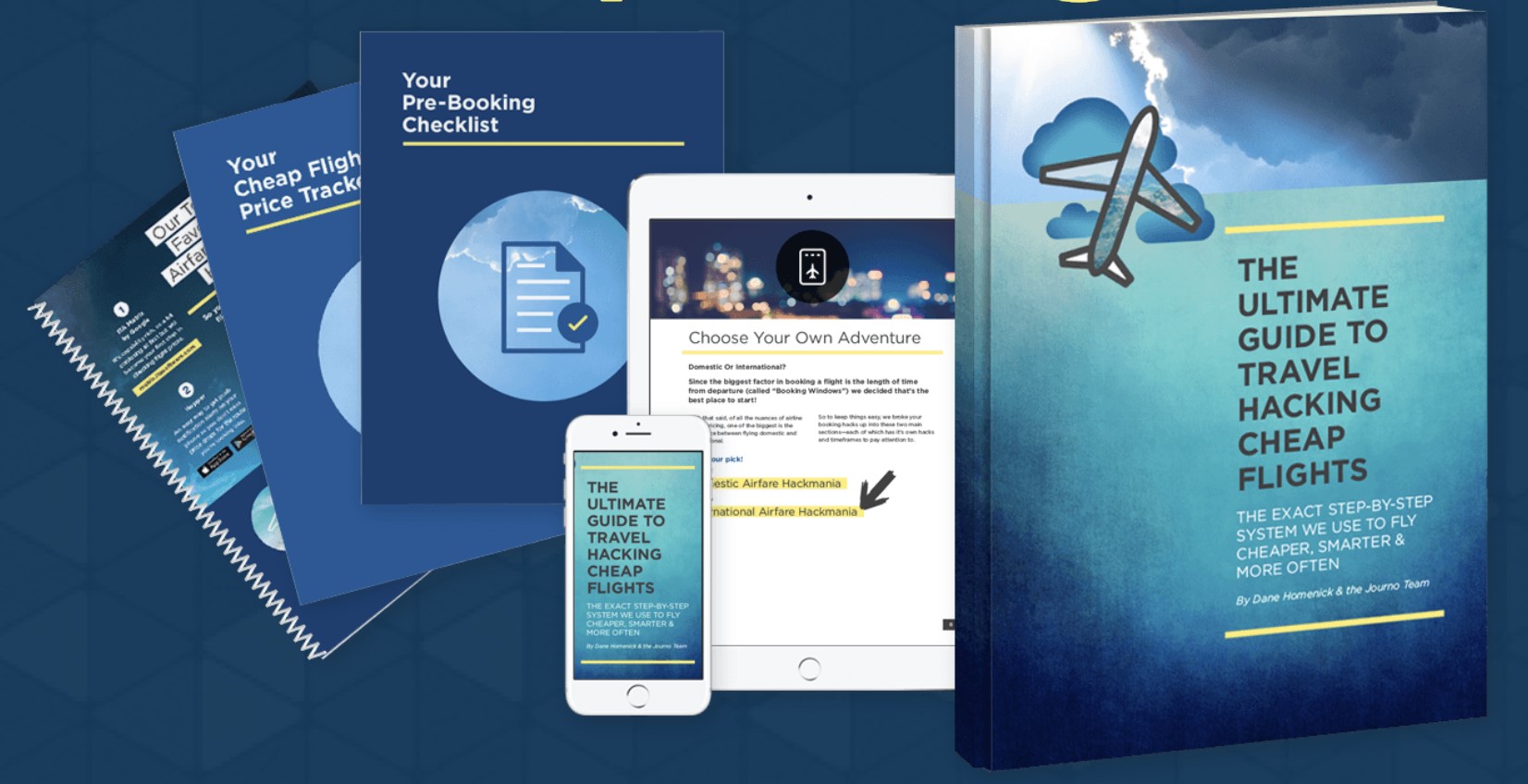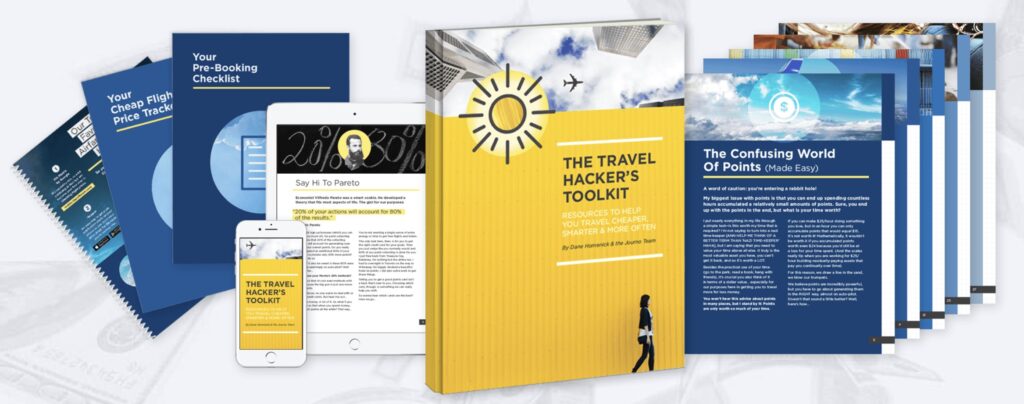Travel Hacking
Traveling on a budget has been revolutionized with options such as the sharing economy, working abroad, volunteering overseas, and discovering discounted flights.
Even amidst the pandemic-induced price spikes, affordable travel is still within reach.
But what’s the most effective way to cut down on travel expenses even further? Enter the realm of travel hacking.
We’ve been travel hackers for years, leading to countless free flights and hotel stays. If you haven’t dived into the world of travel hacking yet, you’re missing out on substantial savings, spending more on your trips than you really need to.
So, what exactly is travel hacking?
In essence, travel hacking involves signing up for travel-related credit cards and accruing points, miles, and rewards that can be redeemed for free flights, upgrades, hotel stays, and more.
While there are plenty of advanced travel hacks and flight hacks available (which we’ll delve into further in a future guide), many find the initial process overwhelming due to the sheer number of programs and cards available.
Which card to choose? How to ensure maximum point accumulation? And how to redeem them effectively for rewards?
It might seem like a lot to comprehend, but rest assured, travel hacking is simpler than it appears. By altering how you pay for everyday expenses like groceries, fuel, and dining, you can begin earning points and miles for free travel.
This guide on Travel Hacking 101 will shed light on the fundamentals, so you can stop overlooking potential savings and start turning your travel fantasies into reality. Let’s begin:
Step 1: Define your objectives
Your first task in travel hacking is to identify your goals. What do you aim to achieve? Are you saving up for an extended family vacation, or are you more interested in occasional free economy flights or hotels?
Maybe you’re eyeing a first-class upgrade, or you’re a frequent flyer seeking perks such as lounge access and free upgrades.
There’s no incorrect response here, so take your time to reflect. Having a clear direction prevents you from getting lost in the vast world of travel hacking.
Setting your objectives will help you select the right cards and spending strategies to reach your goals. There are countless travel credit cards out there, each with its unique benefits and drawbacks.
If you frequently fly with Delta Airlines, for instance, Delta-branded cards would be your best bet. Or if you’re planning a trip to Asia with a Star Alliance member airline, opt for cards that yield Star Alliance points.
Do you prefer to stay at a particular hotel chain? Get their branded card. If you desire more flexibility, choose a card from Chase, Citi, Capital One, or American Express, as their points can be used with various travel partners.
Once you’ve settled on your objectives, you can select the right cards and programs to reach them.
Step 2: Apply for a travel credit card
With your objectives and preferred perks in mind, you can begin shopping for a suitable credit card.
Please note that You won’t be able to amass enough points for travel hacking without a credit card. Here’s everything you need to know about credit cards and why they aren’t the monsters they’re made out to be.
Many starter cards come free, but the best ones often carry an annual fee. This fee can range from $99 to $500 but is typically waived for the first year. You might also get it waived in subsequent years if you threaten to cancel the card.
Some things to keep in mind before applying for a card:
• There isn’t a perfect card – each one has its advantages and disadvantages based on your goals. Don’t fall for blogs proclaiming one card as “the best.”
• Aim for a card with a large sign-up bonus, often ranging between 50,000 to 100,000 points. These are a goldmine and an excellent start to your travel hacking journey.
• Ensure that you’ll be able to meet the card’s minimum spending requirement (usually within the first three months) to unlock the sign-up bonus. If you can’t, it’s better to choose a different card with a lower threshold.
• Be aware of the annual fees. As mentioned, most premium cards have them, and while they’re often offset by the benefits you receive, make sure it aligns with your goals and budget.
Step 3: Smart Spending
Once you’ve received your credit card, it’s time to start spending – wisely.
Remember, the goal is not to spend more but to change where and how you’re spending. Use your new travel credit card for your regular expenses, like groceries, gas, utilities, subscriptions, and even rent (if your landlord allows it).
This strategy will help you meet the minimum spending requirement to earn your sign-up bonus and start accumulating points for every dollar spent.
As a rule of thumb, never buy something you wouldn’t usually do just for the sake of earning points. It defeats the purpose of travel hacking and can lead to unnecessary debt.
Step 4: Pay your balance every month
This is the most crucial aspect of travel hacking. To avoid hefty interest charges and protect your credit score, always pay your balance in full every month. Never spend more than you can afford to pay off. If you find yourself unable to pay your balance in full, it may be a sign that you need to reassess your spending habits.
Step 5: Learn how to maximize your points
Once you’ve got the hang of the basics, it’s time to delve deeper into maximizing your rewards. Learn the ins and outs of your chosen rewards program. Are there certain times or partners that yield more points?
Can you earn bonus points through online shopping portals or dining programs? Keep an eye out for special promotions and offers that can boost your points balance.
Step 6: Redeeming your points
The most satisfying part of travel hacking is redeeming your hard-earned points. Depending on your card and program, you may have various options for redemption, including flights, hotel stays, car rentals, and even experiences or merchandise.
As a rule, you’ll often get the most value by redeeming points for flights or hotel stays. But remember, the best redemption is the one that gets you closer to your travel goals, whether that’s a luxurious getaway or a budget-friendly road trip.
Travel hacking can be an incredibly rewarding hobby, opening doors to travel experiences you might not otherwise be able to afford.
However, it requires careful planning, wise spending, and a dedication to learning the intricacies of various rewards programs.
With time and effort, you can master the art of travel hacking and make your travel dreams come true.
To keep improving your travel hacking skills and making the most out of your credit card points, you can also consider the following strategies:
- Multiple Credit Cards: Once you get the hang of managing one travel rewards card, you might consider getting another. Diversifying your rewards portfolio can provide you with more redemption options and the opportunity to take advantage of different sign-up bonuses and benefits.
- Consider Card Partnerships: Some travel rewards cards have partnerships with airlines or hotel chains, which can make your points or miles more valuable when redeemed with these partners. Make sure you are aware of these relationships and use them to your advantage.
- Consider Cards for Specific Spending Categories: Some cards offer extra points for spending in certain categories, like dining, groceries, or travel. If you spend a lot in a particular category, it may be worth considering a card that rewards that kind of spending.
- Keep Track of Your Points: Points can expire, so keep track of them to ensure they’re used before you lose them. There are several apps and tools available that can help you monitor your points across different rewards programs.
- Points Transfers: Some credit cards allow you to transfer points to various airlines or hotels, potentially at a better redemption rate. Investigate these options before you redeem your points.
- Avoid Points Devaluation: Points devaluation occurs when a credit card company or airline changes the redemption value of their points, which often means you’ll need more points for the same redemption. While you can’t prevent devaluation, being aware of it can help you make the best decisions on when to accrue and redeem points.
- Stay Updated: Credit card offers, sign-up bonuses, and reward systems change all the time. Keeping yourself updated with the latest news and changes can help you make informed decisions about which cards to get and how to use your points effectively.
Remember, travel hacking requires a good deal of responsibility. It’s not for everyone. Always pay off your balance in full each month, keep an eye on your credit score, and only pursue this if it aligns with your financial goals and capabilities.
With diligence and smart strategies, you can use travel hacking to unlock opportunities and experiences around the world.
Further, Don’t Buy A Single Flight Until You Read This Guide.
You can become the flight expert among all of your friends and colleagues by being the guy or gal who finally knows all the dirty little secrets that the airline industry tries to keep from us, and how to exploit them to your advantage.
You’ll save countless time, money, and headaches by finally knowing how to book the cheapest possible flight, based on the illusive “flight booking windows” and hacks you’re about to discover.
If you want to get started flying on cheap travel, click here to check if this travel hacking guide is still available.


